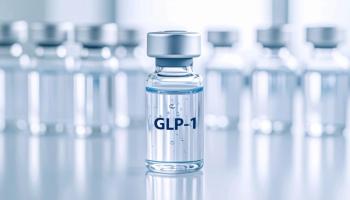
FDA Grants Approval to Oxycodone Hydrochloride Immediate-Release Tablets For Management of Severe Pain
Key Takeaways
- Roxybond 10 mg tablets are approved for severe pain management when other treatments are insufficient.
- SentryBond technology makes the tablets more resistant to manipulation for misuse or abuse.
The approval marks the first and only abuse-deterrent immediate release oxycodone formulation.
Protega Pharmaceuticals announced today that the FDA granted regulatory approval to their oxycodone hydrochloride immediate-release (IR) CII 10 mg tablets (Roxybond; Protega Pharmaceuticals) for the management of severe pain that requires an opioid analgesic for which alternative treatments are insufficient, according to a news release from the company.1
Formulated with SentryBond abuse-deterrent technology, it combines inactive excipients with active pharmaceutical ingredients to ensure the tablet is more difficult to manipulate for abuse and misuse. This is the case even if the tablet is subjected to chemical extraction and/or physical manipulation, according to the news release.1
"The FDA approval of Roxybond 10 mg with SentryBond… fulfills an unmet need for an IR opioid with abuse-deterrent technology that may reduce misuse and abuse while providing pain relief to medically appropriate patients when used as indicated," Paul Howe, chief commercial officer of Protega, said in the news release. "When manipulated, our innovative technology renders the pill more difficult to misuse or abuse, such as being cut or crushed to snort or inject."1
Abuse-deterrent formulations (ADFs) of opioids have been in development for many years, first being marketed in 2010. When opioids are manipulated, a “dose-dumping” effect—where higher serum levels of oxycodone are reached rapidly, resulting in strong psychoactive effects—is achieved. Thus, creating opioid products to help manage severe pain while also preventing abuse and overdoses is of utmost concern.2
The SentryBond technology featured in these newly-approved IR tablets is designed to provide multiple protective layers that resist manipulation or transformation for injection. The technology has potential to be utilized in other medications to help prevent abuse and misuse, including hydromorphone, hydrocodone, and attention deficit hyperactivity disorder drugs.1
According to Protega, over 2000 in vitro tests were undergone to determine if Roxybond tablets were difficult to manipulate vs oxycodone IR. Data garnered from these tests suggest that the physicochemical properties of Roxybond are expected to reduce abuse through intranasal and intravenous routes of administration.1
Some ADFs are created with harder outer shells or alternate bases, or co-formulated with opioid antagonists that can make abuse and manipulation more difficult. Although no amount of reformulation can fully prevent all forms of manipulation, ADFs such as Roxybond can be utilized by pharmacists as 1 part of a multifaceted approach to reducing opioid misuse.2
Pharmacists should be prepared to counsel patients who suffer from severe pain on potential treatment with Roxybond IR tablets, especially patients who have opioid use disorder or are at risk of misusing or abusing their opioid medications.
"The development of Roxybond with SentryBond is a step forward in fighting the national epidemic of prescription opioid overdose," Eric Kinzler, PhD, vice president of medical and regulatory affairs for Protega, said in the news release.1
REFERENCES
1. Protega. Protega Pharmaceuticals receives FDA approval for ROXYBOND (oxycodone hydrochloride) immediate-release 10 mg tablet with abuse-deterrent technology for management of pain. PR Newswire. News Release. Released October 29, 2024. Accessed October 29, 2024. https://www.prnewswire.com/news-releases/protega-pharmaceuticals-receives-fda-approval-for-roxybond-oxycodone-hydrochloride-immediate-release-10-mg-tablet-with-abuse-deterrent-technology-for-management-of-pain-302289975.html#:~:text=Protega%20Pharmaceuticals%20Receives%20FDA%20Approval,Technology%20for%20Management%20of%20Pain
2. Perscio AL, Fudin J, Cowan P, Quenstedt S. Offer patients counseling on ADFs. Pharmacy Practice in Focus: Health Systems. Vol 9, Iss 2. Published March 26, 2020. Accessed October 29, 2024. https://www.pharmacytimes.com/view/offer-patients-counseling-on-adfs
Newsletter
Stay informed on drug updates, treatment guidelines, and pharmacy practice trends—subscribe to Pharmacy Times for weekly clinical insights.

















































































































































































































